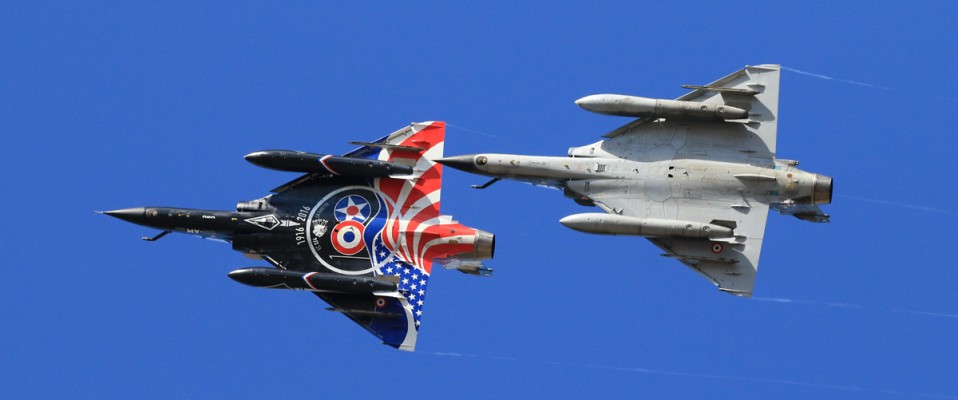2016 Istres Air Show: Centennials, but Always Looking Ahead
Report and Photos by Gabriele Rivera
August 15, 2016
 Aviation history has already passed a century of life for several years, but in the near future it will be common to attend celebrations of centenaries of air forces, squadrons, bases and many other protagonists of this wonderful world. Nevertheless, it is not common to take part in an event organized to celebrate one hundred years of activity of three different players in the aviation scene, in this case, in the country of France. The event we are speaking of has been held in Istres at Base Aérienne 125 “Charles Monier” during the first weekend in June; two sunny days have welcomed over 50,000 spectators, flocking to celebrate the base, the La Fayette squadron and Dassault Aviation. In this period of history which has been heavily loaded with tensions both domestic and international, and despite the heavy commitments caused by participation in various missions abroad, the Armée de l’Air has organized, in agreement with the FOSA (the Foundation that, for over 75 years, has been raising funds in support of the families of military personnel fallen in service), an event worthy of note, moreover in a particularly sensitive base (home to the FAS, Forces Aériennes Stratégiques).
Aviation history has already passed a century of life for several years, but in the near future it will be common to attend celebrations of centenaries of air forces, squadrons, bases and many other protagonists of this wonderful world. Nevertheless, it is not common to take part in an event organized to celebrate one hundred years of activity of three different players in the aviation scene, in this case, in the country of France. The event we are speaking of has been held in Istres at Base Aérienne 125 “Charles Monier” during the first weekend in June; two sunny days have welcomed over 50,000 spectators, flocking to celebrate the base, the La Fayette squadron and Dassault Aviation. In this period of history which has been heavily loaded with tensions both domestic and international, and despite the heavy commitments caused by participation in various missions abroad, the Armée de l’Air has organized, in agreement with the FOSA (the Foundation that, for over 75 years, has been raising funds in support of the families of military personnel fallen in service), an event worthy of note, moreover in a particularly sensitive base (home to the FAS, Forces Aériennes Stratégiques).
Let’s begin with the base, which in addition to achieving the centenary milestone, counts numbers of respect: first of all the runway, the longest in Europe (16,000 feet, a factor which decades ago prompted the United States to select it as alternate emergency for the Space Shuttle in case of problems during the launch). Istres is the home base of Escadron de chasse 2/4 La Fayette and 31e Escadre aérienne de ravitaillement et de transport stratégiques, in turn composed of the Groupe de ravitaillement en vol 02.091 Bretagne and the Escadron de Soutien Technique Spécialisé 15.093; surface-air defense is provided by Escadron Défense de Sol-Air 01.950 “Crau”, which deploys short-range Crotale batteries long-range SAMP-T ones. The base area, extending over 9 square miles, is the daily work location to more than 4,500 people, military and civilian; in addition to the squadrons that form the air component of the French nuclear deterrent, the base is home to part of the DGA (the Direction Générale de l’Armement) and several companies, including Dassault, Thales and Safran-Snecma.
The second centennial celebrated therefore belongs to the base, albeit since a few years; the Escadrille SPA. 124, originated April 18, 1916 in Aèronautique Militaire after an intense lobbying by three American volunteers eager to be part of the selected circle of pilots who at that time were beginning to fight flying over the trenches as modern knights of the sky. The intention of the French authorities was that such a squadron was to help in creating a mood that should have fostered Washington’s entry into the war, then being the USA firmly resolved to remain neutral. A few months later the squadron, based at Luxeuil, was renamed La Fayette, in honor of the noble French officer who in 1777 had sided with the American colonists during the war against the British Crown. The symbol chosen was the head of an Indian Seminole, replaced shortly afterwards by a Sioux one, thought to be more menacing. In the following two years the squadron, always under the command of a French officer, enlisted thirty-eight American volunteers flying on Nieuport and SPAD aircraft, until February 18, 1918 passed, under the ranks of the United States. After a pause of almost two years the head of Sioux returned to adorning aircraft of a French squadron, the 7th of the 35th Aero Regiment, and then came together in 1933 in the Groupe de Chasse 2/5 with men and planes of the Cicognes; World War II saw the Group involved in different theaters, from North Africa to Germany, before returning to Luxeuil. In July 1947 the Group was renamed Groupe de Chasse 2/4 La Fayette, then taking part in operations in Indochina. BA 116 Luxeuil was the Group base until September 2011, when their assignment to Istres was completed.
The third centennial needs no introduction; Dassault Aviation is the current heir of a history tracing back to the first steps of Marcel Bloch in aviation. 1916 is indeed the year that sees his plans to improve the engine’s efficiency of the Caudron G-3 rewarded; his first creation, the Eclair propeller, will be produced in over 4,000 units, kicking off its industrial adventure, which in the course of a century has led to the production of over 100 prototypes, many of which are then entered into service with the most assorted insignias, military and civilian. The Dassault started the celebrations of its centenary a few months ago with an exhibition at the Grand Palais in Paris, but the most important event was definitely the one staged at Istres, for which they prepared a surprise.
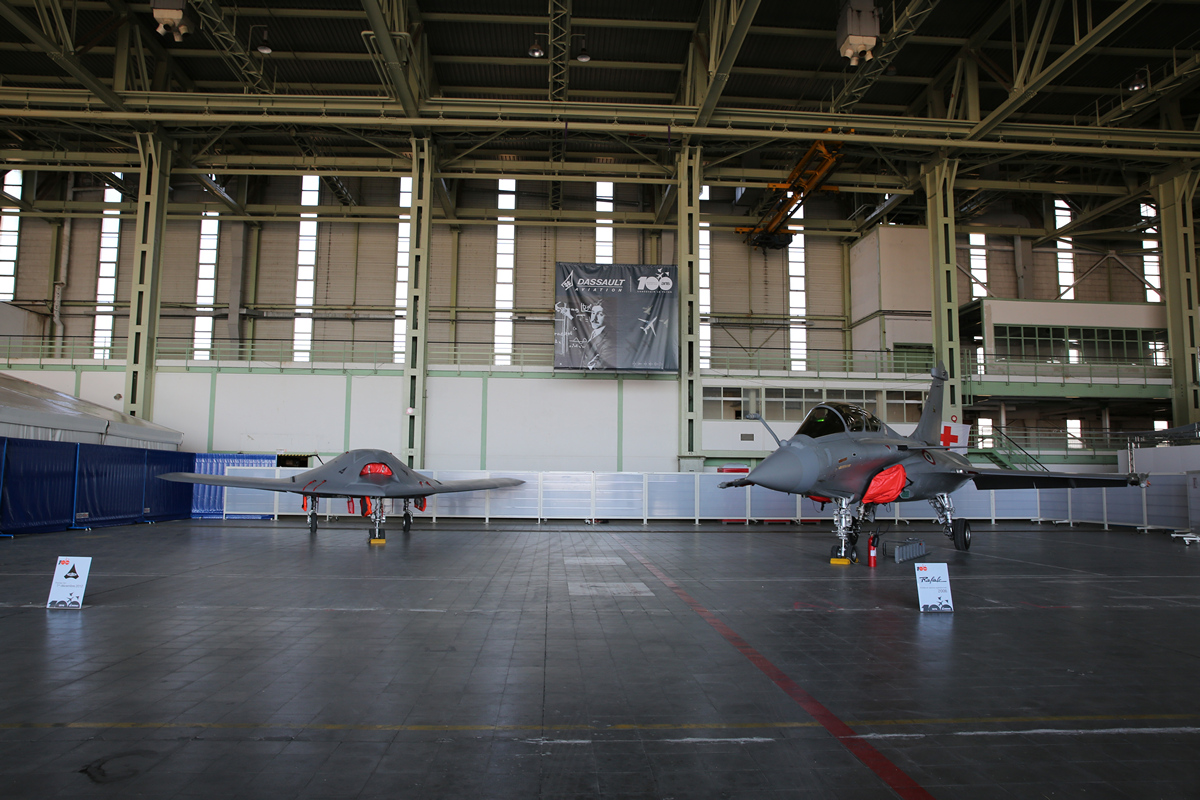
Saturday, as often happens, was the main day of the event; the presence of various civil and military authorities, including the Armée de l’Air Chief of Staff, General André Lanata, and the CEO of Dassault Aviation, Eric Trappier, the peculiar origins of Escadron La Fayette have been celebrated with a joint French-American initiative. In the static exhibition the guest of honor was definitely the B-1B of the 28th Bomb Squadron, 7th Operations Group, from the base of Dyess, Texas. The presence of a ship of the 28th BS is not random; the emblem, a head of Mohawk, reminiscent of La Fayette, but especially the Squadron, established in 1917, has redeployed for the first time just in France, taking part in the war’s last year. The gifts from across the pond have also included a greeting by a B-52 of the 23rd Bomb Squadron, 5th Bomb Wing; taken-off several hours before from Minot in North Dakota, she carried out three passages over Istres base, then heading towards Fairford, the first hop of a temporary redeployment in Europe in order to participate in BALTOPS, Saber Strike and Just Hammer exercises. One of the high points of the day was the launch of EPPCAA (Équipe de Parachutiste Présentation et de Compétition de l’Armée de l’Air) skydivers, which spiraled several minutes waving France and USA flags; once they reached the ground, the two flags were greeted by their respective national anthems, the Marseillaise sung by children from a local school, while Star and Stripes had been sung by two base soldiers.
Of particular interest, or better, of historical interest, the plane that brought both days the parachutists at launch level; is the last flying Nord 2501 Noratlas in the world, kept in excellent condition by the association “Le Noratlas de Provence”, based in Marseille, which with a commitment of more than 24,000 hours of work saved her from a fate of destruction to ensure years of performances around Europe. Thanks to the admirable efforts of the association’s members the Noratlas ‘105’, which has made its maiden flight in May 1956 and now counts more than 10,000 flight hours, has obtained in 2007 the coveted status of historic ‘monument’. Not satisfied to serve as a launching pad for the skydivers, ‘Le Grise’ (The Grey) delighted the public with a truly impressive flight presentation.
One of the most anticipated moments was the performance of Ramex Delta, this time over their home base. Being the Escadron‘s centenary, one of the two demo aircraft were repainted recalling the colors and symbols of the highlights of the La Fayette history, and the result yielded much appreciation. The Ramex will suspend their activities this summer due to the Mirage 2000N phase-out; once the conversion to the Rafale is completed we hope they will resume exhibitions, presumably in 2018. Their performance aroused the audience’s enthusiasm; for the occasion then they performed several flypasts in formation with the Patrouille de France (whose top-level display has followed the Ramex’s one), ending with a flight-refueling simulation performed by a C-135FR.
Saturday afternoon held two more surprises; the first was prepared at length and in great secrecy by Dassault with the DGA and the Armée de l’Air, and it was nothing less than a world first. For the first time the public has had the chance to see flying the only prototype of nEUROn, UCAV developed by the French company in cooperation with Greece, Italy, Spain, Sweden and Switzerland. But the event was more special because the flight was in formation with the other two Dassault top products, i.e. Rafale and Falcon 8X. The audience witnessed a glimpse of the future; in a not so distant future it will be increasingly common to see planes conducted by a pilot on board fly along with remotely piloted aircraft; what better way to celebrate an anniversary showing a teaser of the developments of the coming years? After about fifteen minutes of flight nEUROn landed and was subsequently exposed in the Mercure hangar, albeit appropriately fenced.
The second surprise, though utterly conventional, was a series of very dynamic passages performed by an Airbus A350 XWB. Let’s get to the other performers, which have given substance to an interesting program of exhibitions. The rotary wing was well represented; the NH90 Caiman, in addition to give vent to the power of its engines, would have undoubtedly won a hypothetical prize for the best camouflage schema. Appreciated for its agility Eurocopter EC120 Colibri (Calliope for the French market), performed solo with a garish red livery and with the Spanish patrol ASPA, whose five ship program has been very successful; a truly original maneuver was the “Don Quixote”, during which four Colibri ‘interpret’ the windmills and a fifth embodies the spirit of the famous knight, icon of Spanish literature.
Also the SAR demonstrations have attracted the attention of the public; the Super Puma of the Escadron 1/44 Solenzara showed how to run a SATER mission (SAveutage TERre), particularly the way the stretcher is hoisted aboard, while the Sécurité Civile EC145 has implemented a classic operation recovering the rescuer by winch. The Sécurité Civile has also shown the operations of water bombs released by two aircraft, the very well-known Bombardier CL-415 and less widespread Grumman S-2FT Tracker.
The aerial acrobatics has had its worthy representatives: the hosts sent in flight the EVAA (Equipe de Voltige de l’Armée de l’Air) Extra 330SC, whose pilot showed once more the exceptional qualities of this machine, and the French Glider Aerobatic Team SWIFT S1, enchanted the audience with its silent twirling. The Patrouille Captens mounted on two Mudry CAP 10 piloted by the Shaws (incidentally American him and French her), delighted the public with elegant maneuvers underlined by smoke.
Even the pistons had their share; the Skyraider and Mustang are often guests in several airshows, while it is rare to admire, outside of France, the elegant twin-engine MD312 Flamant, another product of Dassault mastery.
Of course the ‘metal screaming’ was not represented only by Ramex Delta; the Rafale Demo impressed by the agility and power, but were equally superlative performances the Belgian F-16 and Swiss F-18 ones. A pleasant appearance was offered by another host, a C-135FR; just after the flight-refueling simulation, gave the audience a splendid overflight banking English-style.
The static displays were varied and interesting; in addition to several Mirage 2000 and Rafale (including one assigned to La Fayette), the ‘stars’ were definitely the Mirage IV, the Falcon 7X and the Atlantique 2. One of the two C-135 displays was in the MORPHEE configuration (Module de Réanimation pour Patient à Haute elongation of evacuation); the plane so set up can carry up to 12 ‘stretchers’, actually real medical stations designed to stabilize and provide all necessary care for serious injuries during the transfer to the national hospitals. In 2025 this mission will be featured by the Airbus MRTT.
Displayed together with two Armée de l’Air Alpha Jets was a guest Republic of Singapore Air Force M-346 Master. The Asian country has signed a twenty-year agreement with France to train its pilots for the LIFT (Lead-In Fighter Training) phase on BA120 Cazaux, and since 2012 has replaced the antiquated Skyhawk with the new Italian aircraft. A chat with the instructor pilot, callsign Milan, confirmed RSAF’s extreme satisfaction about the integrated simulator-aircraft training system that provides enormous cost and time savings, graduating pilots with a level of readiness that allows them to carry out the operational conversion on the first line aircraft in far fewer hours.
Parked at the northern end of the taxiway, the Antonov 124-100M-150 has been constantly visited by spectators, who stood patiently in line not to miss the opportunity to explore the massive aircraft cargo bay as Jonahs in the flying whale’s belly. The plane is a frequent guest at BA125, used by the base’s industries to ferry various types of loads.
The DGA, which at Istres has one of the two main bases, has shown different planes, all of them modified to test new avionics, armaments and other systems; among them a Falcon 2000EX, a Pilatus PC-7, a Mystère XX and an SA-330 Puma.
In an air show one does not necessarily expect to see displayed land vehicles, but also in this case Istres has not disappointed; the Escadron “Crau”, in charge of defending the base from airborne threats, has deployed a Mamba battery (French version of the SAMP / T system, based on the Aster 30 missile, with a range of action more than 80 km) and a Crotale one, used for short range defense (range about 11 km), complete with search and tracking radars and command and control modules.
The last treat was the reconstruction of a World War II US military camp, a clear homage to the US ally; in addition to a large number of Willys, there were several wheeled and armored vehicles, including one used in one of the latest Hollywood blockbusters, Fury.
Sunday afternoon concluded the last flight operations, we witnessed, with great pleasure, the full success of the event organized by FOSA in collaboration with the three celebrated hosts. It was a privilege to celebrate a past so rich in achievements with an eye to the future, always committed to overcome new challenges.

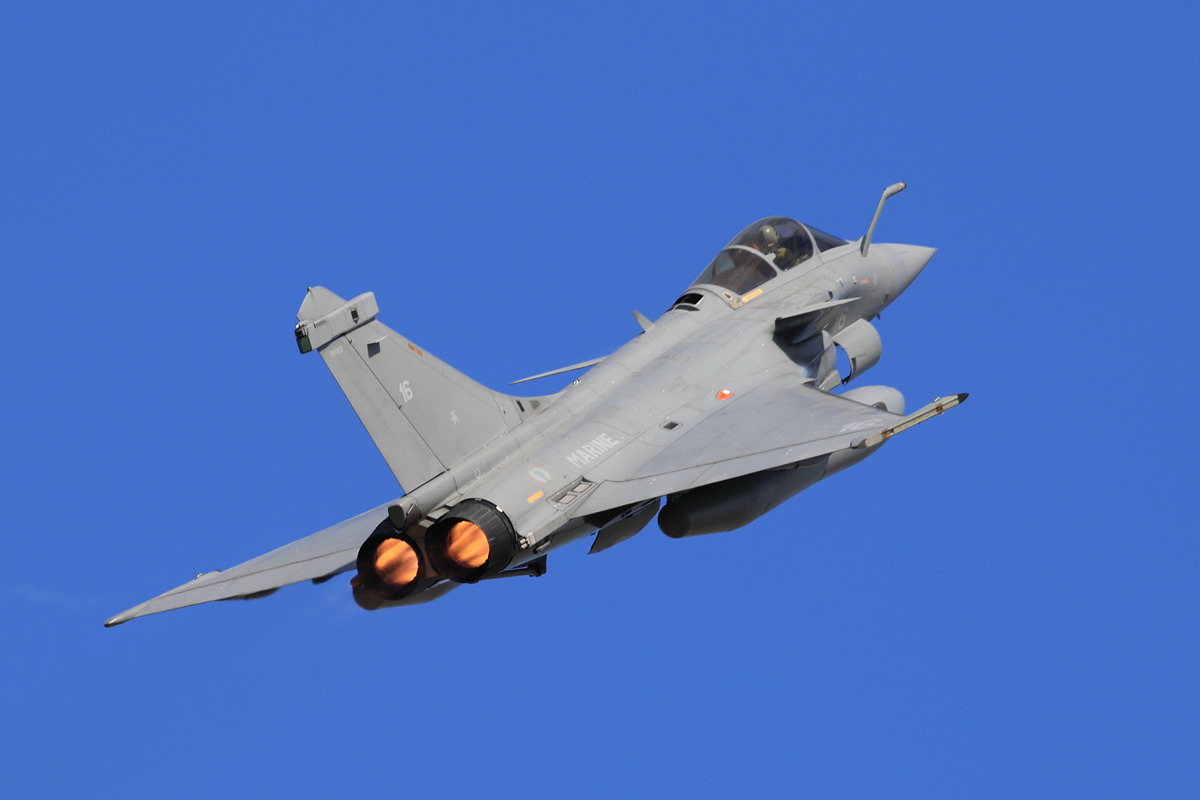

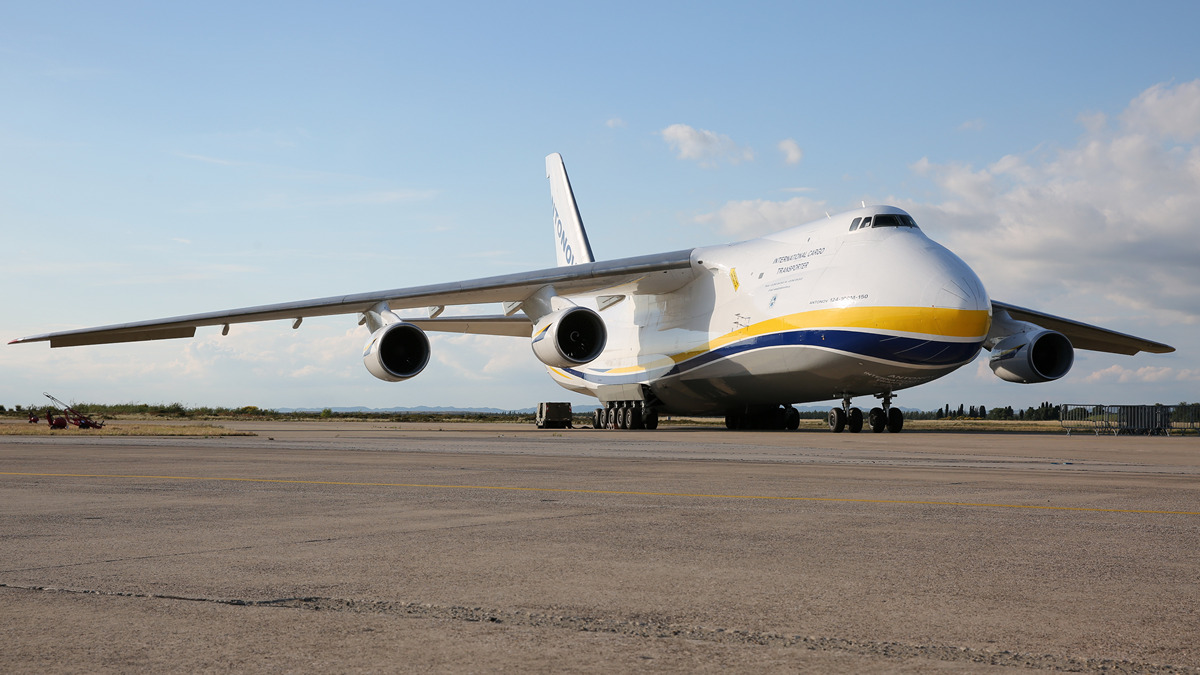

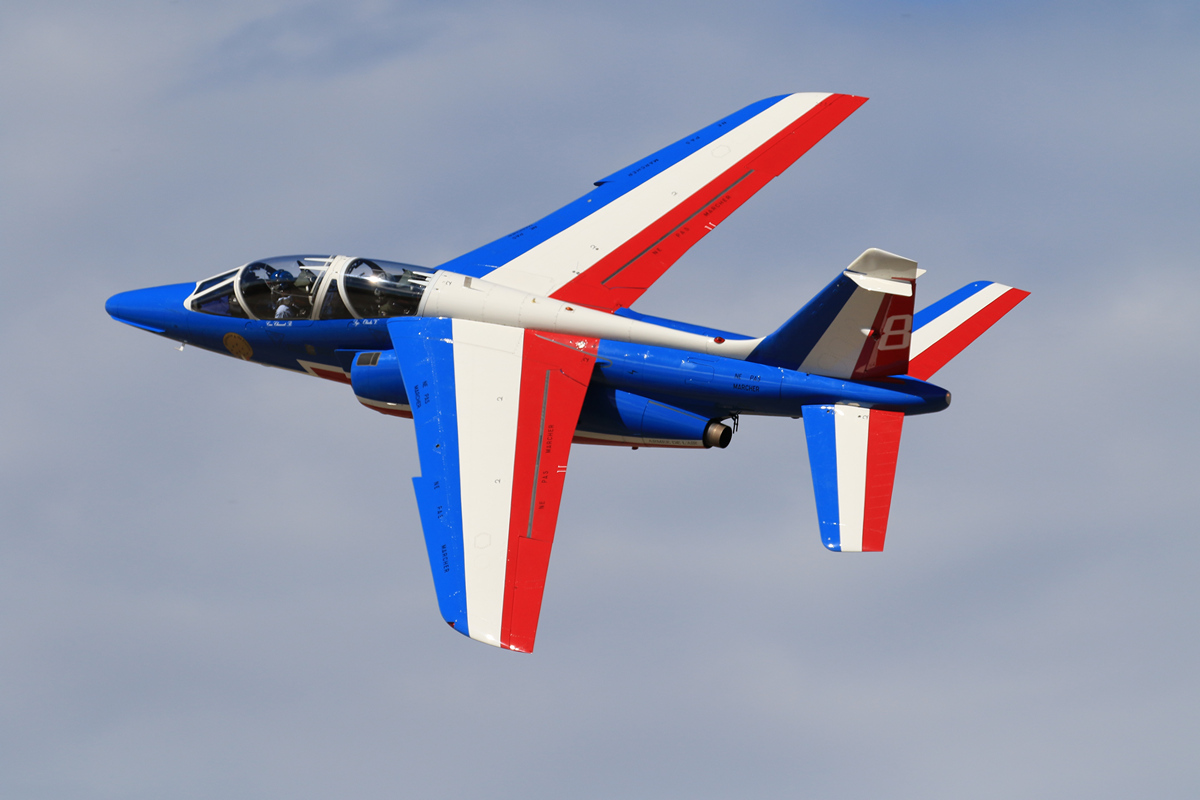


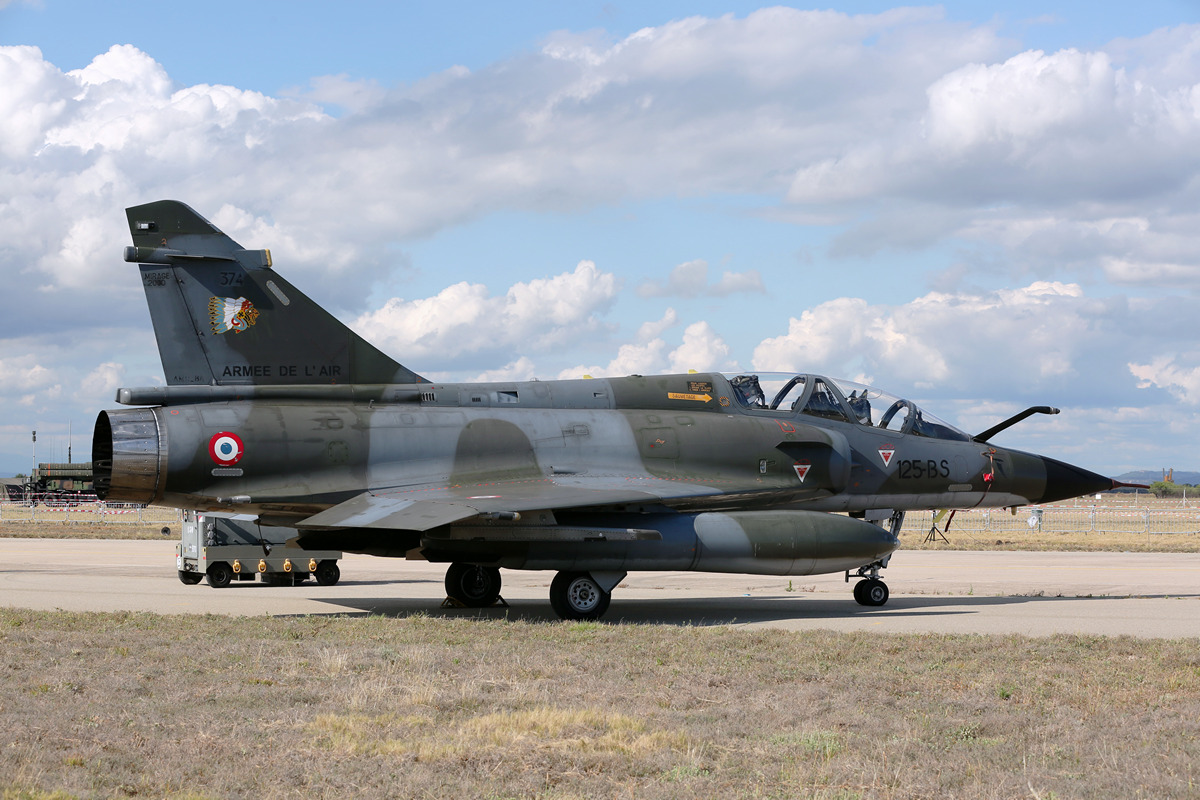
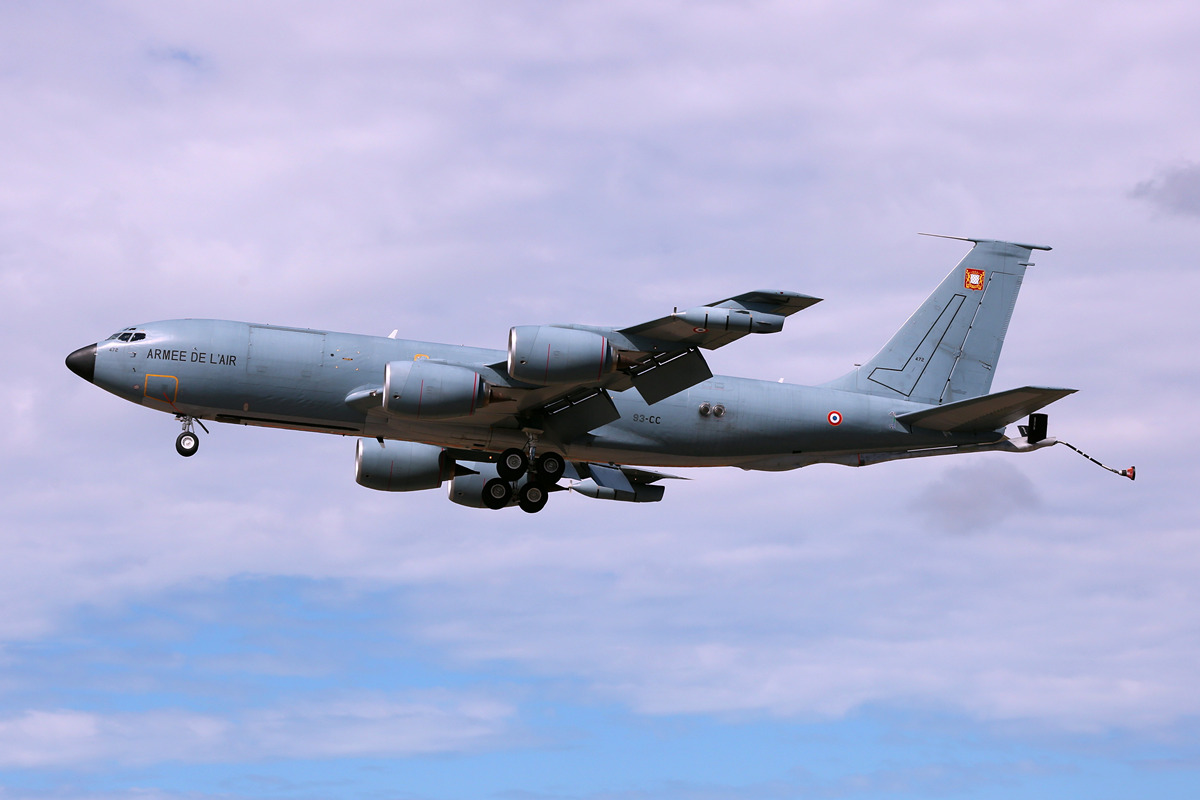
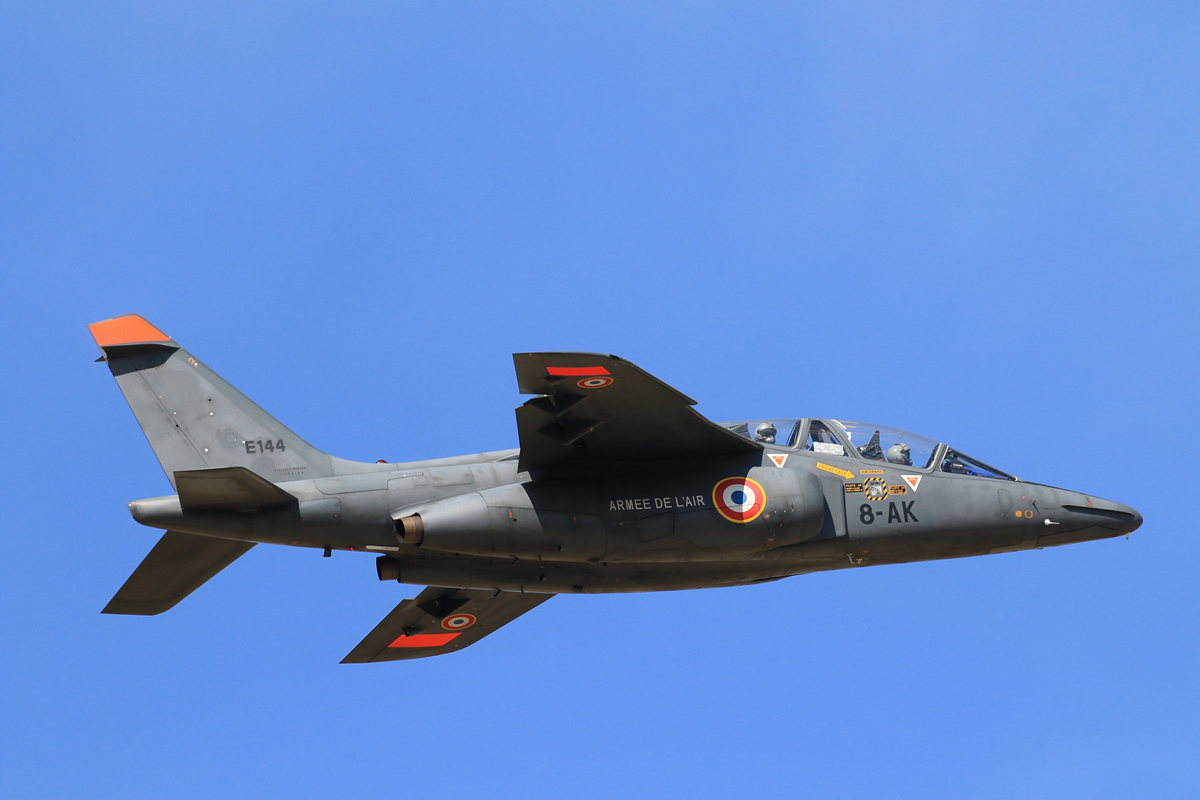
Click on an image below to page or swipe through the gallery:
Gabriele was born in Turin, Italy, grew up in Sicily and now lives in Rome. His love for aviation goes back to the days when he was seven years old, he started to collect the ‘History of Aviation’ sold weekly at the nearby newsstand. With that, he realized that his goal was to become a military pilot. This dream met a harsh reality when, during the medical tests, a defect in his chromatic sense of sight was discovered.
His interest in photography arose a few years later, when he bought from a colleague his first single-lens reflex camera, a Pentax ME Super. Then everyday life took its toll; working as an IT analyst, studying for an MD in political science and starting a family left no time for enjoying his old interest for aviation. One day in 2008, he decided to revive the passion, starting again to take pictures of aircraft each time he has a chance. Now, using Canon gear, he is striving to become a photojournalist.
Gabriele can be reached at: [email protected]


